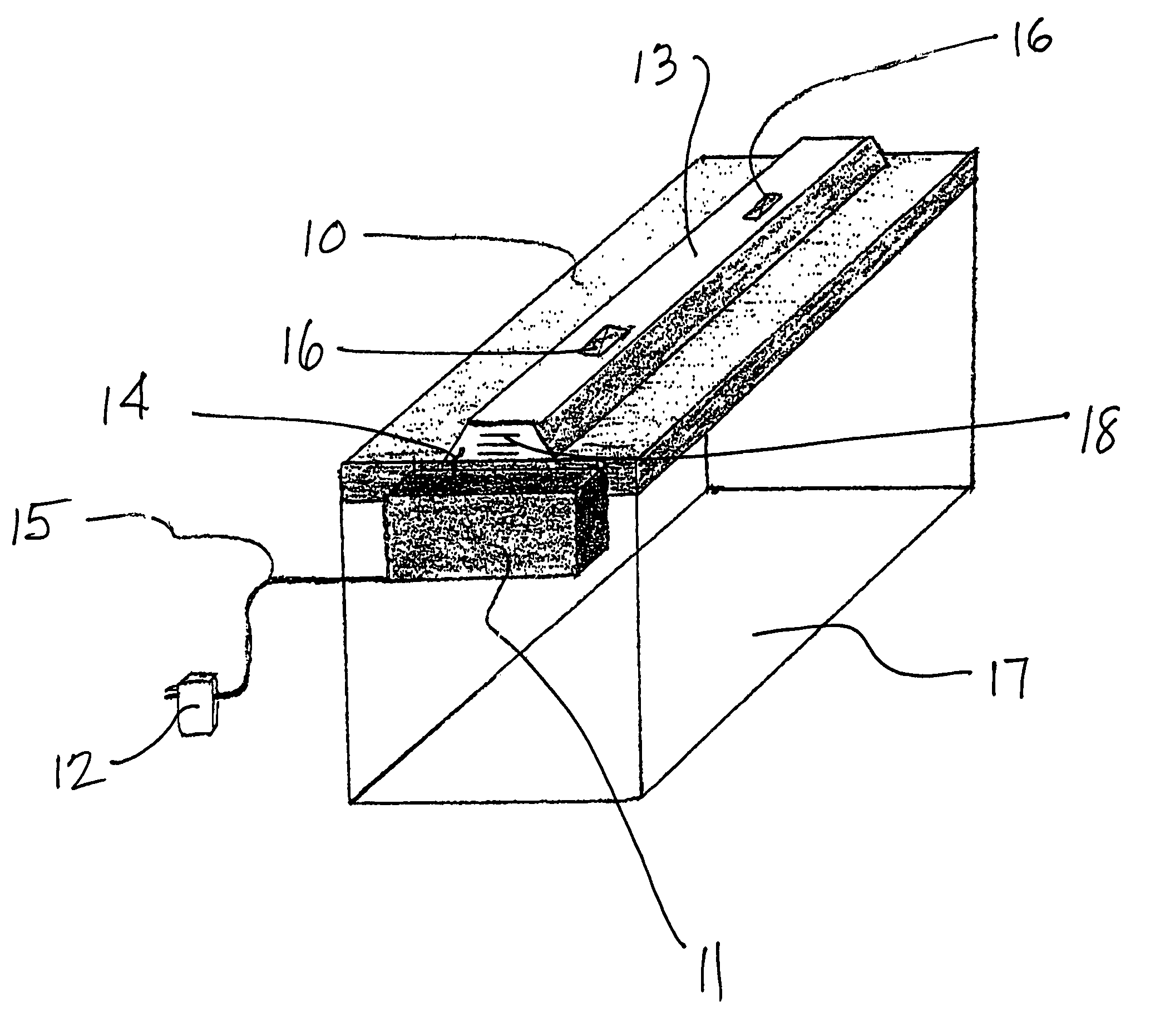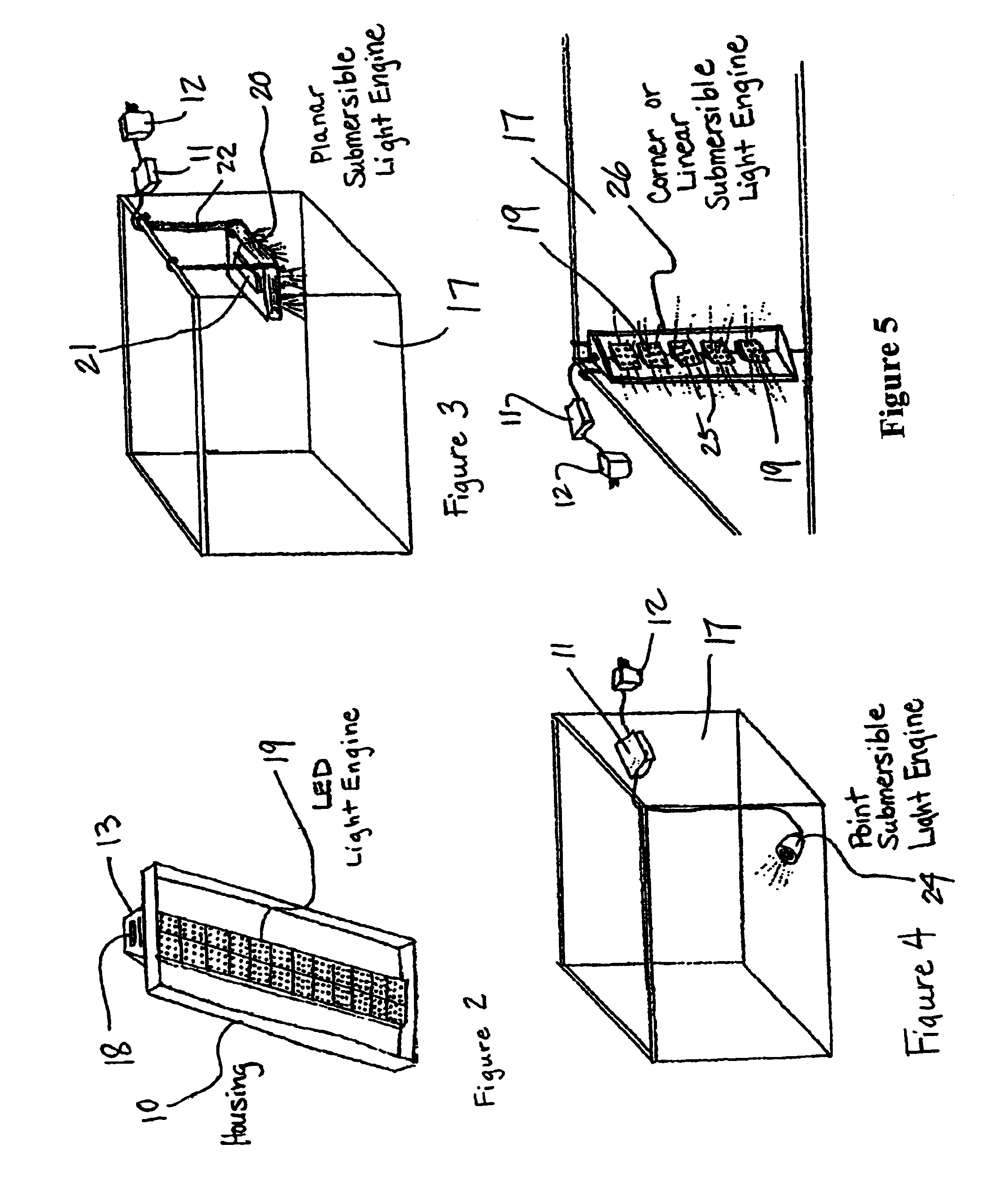Marine LED lighting system and method
a technology of led lighting and light-emitting diodes, which is applied in the direction of lighting elements, lighting and heating equipment, display means, etc., can solve the problems of degrading light quality and quantity, none of the prior art describes a marine life promotion system using light-emitting diodes,
- Summary
- Abstract
- Description
- Claims
- Application Information
AI Technical Summary
Benefits of technology
Problems solved by technology
Method used
Image
Examples
Embodiment Construction
[0011]The present invention provides a lighting system for marine growth and more specifically to a light-emitting diode-based (LED) lighting system that delivers spatially and spectrally controlled light with optional optimal spectral output for growth of marine life. Such systems are particularly applicable to photobioreactors, fish hatcheries and aquariums, among others. Improved growth is achieved due to user programmable spectral and spatial control of light to allow for organism-specific lighting conditions with optional portability and submergibility for even greater light intensity delivery.
[0012]LED lighting technology is able to deliver high intensity light into a marine environment in a new way when compared to traditional systems. The use of LEDs enables the system to independently control the intensity of each spectral component as a function of time. This allows a user to provide the optimal wavelengths between 380 nm to 690 nm used by specific marine plant and animal ...
PUM
 Login to View More
Login to View More Abstract
Description
Claims
Application Information
 Login to View More
Login to View More - R&D
- Intellectual Property
- Life Sciences
- Materials
- Tech Scout
- Unparalleled Data Quality
- Higher Quality Content
- 60% Fewer Hallucinations
Browse by: Latest US Patents, China's latest patents, Technical Efficacy Thesaurus, Application Domain, Technology Topic, Popular Technical Reports.
© 2025 PatSnap. All rights reserved.Legal|Privacy policy|Modern Slavery Act Transparency Statement|Sitemap|About US| Contact US: help@patsnap.com



